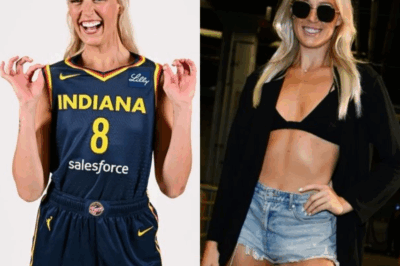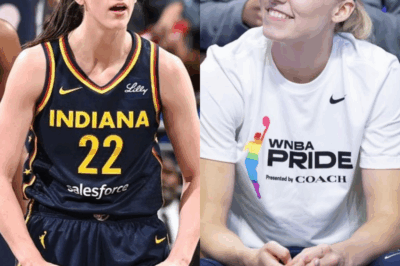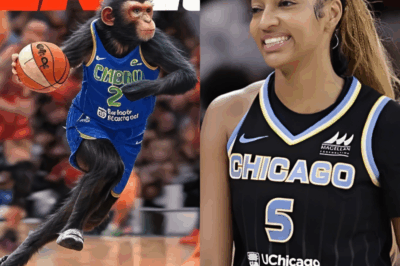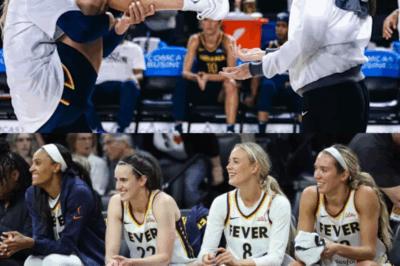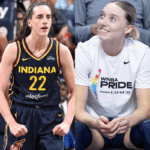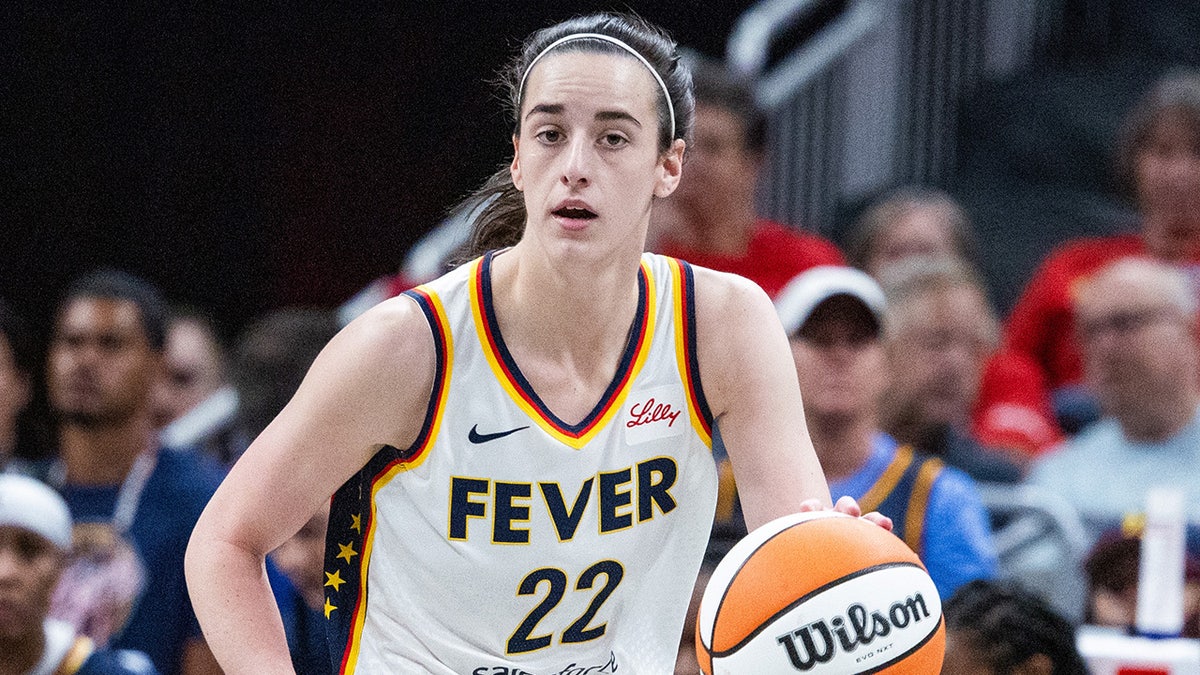
The sun hadn’t even crested the horizon over Indiana when something extraordinary began to unfold at a quiet regional airport. There were no reporters, no camera crews jockeying for position, no press releases trumpeting what was about to happen. Just six sleek, white private jets, unmarked except for a single name in blue script painted just below the cockpit on each: Caitlin Clark. The ground crew moved with a sense of urgency and purpose that betrayed the gravity of the moment. Forklifts hummed softly as they ferried pallet after pallet of supplies—boxes marked with emergency relief tags, bags of rice, crates of bottled water, hygiene kits, and bundles of blankets—toward the open bellies of the waiting planes. Volunteers, some yawning, some wide-eyed with adrenaline, worked in near silence, their movements choreographed by equal parts necessity and hope.
At that hour, the only witnesses to the operation were those who happened to be awake—airport staff, a handful of truck drivers, and a lone teenager with a camera phone. But by the time the first photo hit social media, the story was already writing itself. The image of a jet, its fuselage gleaming in the early light, with “Caitlin Clark” emblazoned on the side, ricocheted across the internet like wildfire. By breakfast, it was everywhere.
What set this apart from the usual celebrity gesture was not just the scale, but the silence. No one had been tipped off. No one had been invited to watch. This was not a publicity stunt. It was a mission born in the dark, out of necessity, and fueled by the quiet conviction of a woman who, despite being the most talked-about rookie in basketball, seemed determined to let her actions speak louder than her words.
The reason for the urgency was heartbreakingly clear. Texas, battered by some of the worst floods in decades, was in crisis. Entire communities were underwater, families displaced, roads impassable. At least fifteen children were dead, dozens more missing, and thousands left without food, water, or shelter. The usual lifelines—FEMA, the Red Cross, local authorities—were stretched to the breaking point. And in the chaos, there were pockets of rural Texas that had become unreachable, islands of desperation cut off from the outside world.
Caitlin Clark, just days earlier, had announced a $20 million relief fund to help flood victims. But when word reached her that supply trucks couldn’t get through to some of the hardest-hit towns, she didn’t wait for someone else to act. She picked up the phone and started calling every contact she had—private aviation networks, food logistics firms, a veteran WNBA team logistics manager, and local relief centers in Texas. By midnight, she had a plan. By dawn, six planes were loaded, fueled, and ready to fly.

There was something almost cinematic about the sight of those jets lifting off, one after another, slicing through the morning haze. Each was packed to the gills with the essentials of survival: non-perishable food, baby formula, bottled water, hygiene kits, blankets, children’s clothes, hand-crank flashlights, portable radios, diapers, and children’s medication. Every inch of cargo space was filled, right down to the last box. Clark had personally asked relief coordinators for a list of “what’s needed most,” and then told her team to “fill every cubic inch.” This was not about charity for charity’s sake; it was about meeting needs, about saving lives.
As the planes streaked south, the world began to catch on. At first, people assumed it was FEMA or some government operation. But when sharp-eyed locals in Texas spotted the name “Caitlin Clark” on the side, the questions started. By 9:00 a.m., the full story broke: Clark had personally funded and coordinated the mission overnight after learning that federal agencies couldn’t reach three of the most devastated communities. The reaction was immediate and overwhelming. The hashtag #ClarkForTexas shot to the top of trending lists worldwide. Takeoff footage racked up millions of views on TikTok. News anchors on CNN, ESPN, NBC, and Good Morning America led with the story. One viral caption said it all: “She’s not just a rookie of the year. She’s a responder of the year.”
But the headlines, as powerful as they were, couldn’t capture the raw emotion on the ground. In Lockhart, Texas, two of the planes touched down at a makeshift airstrip. Children, some barefoot, some still wearing pajamas, lined the fence holding handmade signs: “Thank You, Caitlin.” In Bastrop County, a single mother wept as she opened a box stamped with Clark’s Heart Over Hoops logo. “My baby hasn’t had milk in two days,” she whispered, clutching a can of formula. “This… this saved us.” At a youth shelter in San Marcos, volunteers set up a projector and played footage of Clark’s games. The kids, most of whom had never seen a WNBA game in person, watched in awe. One girl, her voice barely above a whisper, said, “She didn’t just send food. She came to see us.”
And she had. By early afternoon, Clark herself arrived at a small airfield in Texas. She wore no makeup, no branded gear—just a grey Heart Over Hoops hoodie and sneakers. She refused all media interviews, slipping quietly into a temporary shelter rather than a press conference. Her first stop was the playroom, where she sat on the floor beside a seven-year-old boy who had lost both parents in the flooding. They played with a deflated basketball someone had found in a corner bin. When he finally reached out and hugged her, she hugged him back—and then she cried, too.
For all her accolades, for all the records and sold-out arenas, this was something different. This was not about stats or MVP votes or rivalries. This was about what you do when the cameras aren’t rolling, when no one is asking, when the world is hurting and you have the means to help. Clark, in that moment, chose to lead by example, to use her platform for something bigger than herself.
Her fellow athletes noticed. Angel Reese, often cast as Clark’s rival, reposted the airlift photo and wrote, “No matter what team you rep—this is what real ones do. Respect.” Steph Curry called it “the most important pass she’s ever made.” A’ja Wilson, Clark’s fellow All-Star captain, said she’d be “organizing an additional plane for shelters Caitlin hasn’t reached yet.” Even WNBA Commissioner Cathy Engelbert weighed in, saying the moment “transcended sports.”
Clark is expected to remain in Texas for several days, working alongside Red Cross and local coordinators, helping wherever she’s needed. Other WNBA teams are reportedly organizing their own supply flights. The Indiana Fever released a statement: “We’re proud of Caitlin. But more than that—we’re inspired by her. We will continue supporting her mission however we can.” The league is already working with Clark’s team to establish a permanent emergency relief arm under the Heart Over Hoops banner.
In sports, people talk about legacy all the time. Points. Rings. Records. But legacies aren’t always built on stat sheets. Sometimes, they’re written on cardboard signs held by children in crisis. Sometimes, they’re sewn onto blankets in the back of a shelter. Sometimes, they’re painted across the side of a plane, rising into the sky at sunrise, carrying not just food, but hope. And sometimes, a name like Caitlin Clark’s becomes not just a headline, but a symbol—a reminder that greatness isn’t just measured by what you do on the court, but by what you do when the world needs you most.
News
Sophie Cunningham Gives The Fans What They Want By Shaking Her B00ty To Celebrate Incredible Milestone
Sophie Cunningham (Photo via TikTok) It’s been a busy week for Indiana Fever guard Sophie Cunningham. It has only gotten better. On…
Rachel DeMita Finally Speaks Out After Being Fired From BIG3 Over Caitlin Clark Tweet
Rachel DeMita (Photo Via Instagram/@rademita) Rachel DeMita didn’t wait long to clear the air. The former BIG3 courtside commentator, who…
NFL WAG Alix Earle Was Testing The Limits Of Her Red Bikini In Steamy Photoshoot That Even Had Olivia Dunne Drooling
Alix Earle (Photo via Instagram) Alix Earle has millions of followers across several different social media channels, and she knows…
VIDEO: Paige Bueckers Was Incredibly Annoyed by A Caitlin Clark Question
Paige Bueckers (Photo via Twitter) Paige Bueckers and Caitlin Clark faced off in their first WNBA matchup on Sunday. On a minute restriction…
Social Media Unearthed Rare Photo Of Angel Reese That Will Silence Her Haters Once And For All
Angel Reese (Photo By Patrick Gorski-Imagn Images) If Geno Auriemma pulls up to your high school gym, you’re not just…
Caitlin Clark Drops One-Word Bomb About Sophie Cunningham — And It’s Got The Entire WNBA Buzzing No long rant. No drama-filled interview. Just one word — and Caitlin Clark knew exactly what she was doing. Her choice of phrase for Sophie Cunningham is making waves across the league and stirring major reactions online. Compliment… or subtle jab? Fans can’t stop dissecting it.
Caitlin Clark and the Indiana Fever took care of the Atlanta Dream on Friday night in large part because of Sophie…
End of content
No more pages to load

